I am writing this to you from a dive boat headed for the Molokini Crater off the coast of Maui in Hawaii. The rolling of the boat makes typing challenging, so please excuse me for more than the usual number of typos.
In the distance farmers are burning off their harvested cane fields, creating giant plumes of smoke, a practice banned in the continental US decades ago.
A pod of dolphins are racing the bow of the boat and humpback whales are blowing their spouts on the horizon. Periodically, the boat scares up a school of flying fish going airborne to find safety.
Life is good.
Another thing I have noticed cruising off the Maui leeward coast is that almost every building has solar roof panels. Of course, the incentive here is huge, as costly imported fuel for power plants makes electricity in Hawaii 20%-50% more expensive than it is on the mainland.
By now, you probably are sick to death of my banging on about the fantastic investment opportunities in the solar industry. But I am not recommending the sector because I wear Birkenstocks, eat organic bean sprouts and recycle even my vegetable waste. Putting money into solar now also makes solid business sense.
Did I also mention that it prevents millions of tons of carbon from entering the atmosphere, or about 5 tons per household per year?
With the stocks expected to rise by ten times over the next decade, you better get ready for more abuse. The solar industry is about to cross an epochal, sea changing benchmark.
Thanks in part to heavy competition from China, South Korea and Japan, the cost of solar panels has collapsed by 75% over the past four years.
Indeed, Chinese flooding of the US market with cheap imported panels almost wiped out every American producer. If you don't believe me, then check out the long-term stock charts.
More importantly, the cost of industrial, utility sized solar power plants has fallen by 50%.
Only four years ago, large solar power plants made economic sense only after heavy government subsidies were included. They were all part of a "stimulate the economy and save the world" philosophy demanded by the global economic collapse.
Now we are about to attain the Holy Grail: solar that is profitable on a stand-alone basis.
Don't get me wrong. Subsidies are nice, as the oil and gas industry well know. I have been sidling up to the trough myself lately with my own solar projects (more on that in a future research piece). But subsidies are no longer the lifeblood of the business.
The economics of solar roof installations are now so compelling, that they are going up everywhere across the country. In fact, everyone on my street has one except me.
That is because the technology, which I keep close track of, is evolving so quickly that it has paid to wait. I did the same when I skipped six track tapes and waited for eight tracks ones, ignored Betamax in favor of VHS, and passed on Windows 1 (which always froze), but soaked up Windows 2.
A solar installation now also protects you from the hefty price increases that will be demanded by your local utility to pay for long overdue infrastructure upgrades.
I am also holding out for the best possible deal (you know me). With one Tesla Model S in the garage, and a Model X on order, I also happen to be one of the largest residential electric power consumers in the state. So, we're not talking small beer here.
This is starting to have a sizeable impact on the American electricity market. A reader who works for Southern California Edison (SCE/PF) has told me that the cumulative effect of millions of home silicon roof panels is now so great that the traditional daily afternoon power demand spike is starting to disappear.
Even Saudi Arabia is building solar plants now, and they have access to nearly unlimited crude at a mere $5 a barrel.
The Spanish engineering company TSK has just signed a contract with Dubai to build a sizeable, state of the art 100-megawatt photovoltaic plant. The production costs there will work out to just $5.85 a kilowatt hour.
For oil to be competitive with this capital cost, the price would have to stay under $50 a barrel for the next 20 years. Technological advances on stream will make solar competitive at $20 a barrel in a year or two. This explains why some $2.7 billion worth of solar contracts with the Middle East are currently in negotiation.
Oil poor states are rushing even faster to the solar panacea. Jordan is planning to obtain 20% of its power from alternative sources by 2020, while Egypt has set a more ambitious 20% target. Morocco, which I will be visiting this summer, is the most aggressive, with an impressive 42% goal.
All of the means dramatically falling costs and soaring revenue for the solar companies. That sounds like a great business plan to me.
The usual suspects here include First Solar (FSLR), at $11 billion, the largest capitalized behemoth in the industry, and the master of thin film technology. Their power plant near Las Vegas is a sight to behold from the air.
There is Solar City (SCTY), Elon Musk's highly competitive entry in the field, which will be able to draw from Tesla's massive $6 billion giga factory in Reno, Nevada.
Sunpower (SPWR) is the Rolls Royce of the solar industry, producing the highest efficiency rated 340-watt panels (thanks to the pure copper substrate), which I will soon be installing in my own home. Love that biochemistry degree!
You could also go risk averse and buy all of them through the Guggenheim Solar ETF (TAN).
The key here is the price of oil, which has unnecessarily dragged down the shares of solar companies over the past nine months. Once it bottoms, if it has not already done so, it will be off to the races.
While your big cap oil majors might add on 40% in value in any recovery, the solars could be in for a tenfold return.
Back to me whale watching. Thar she blows!
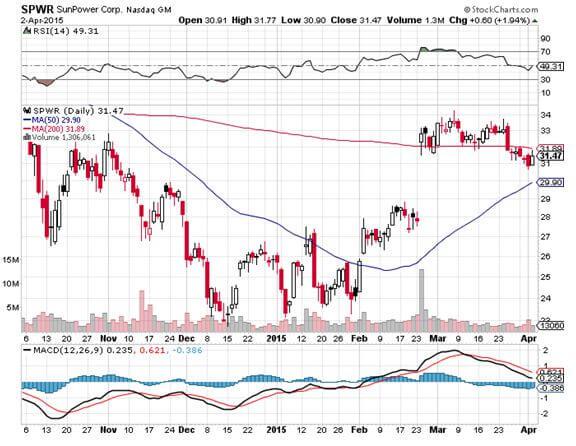
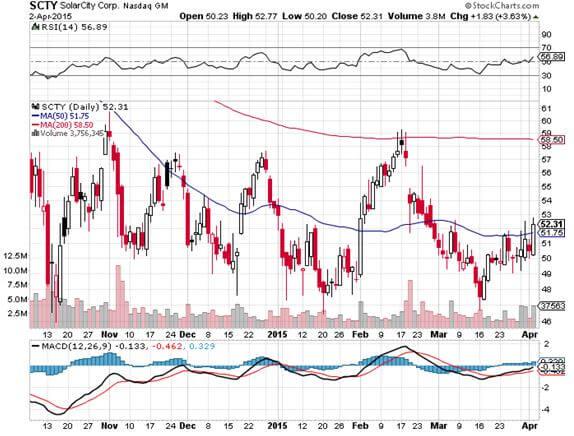
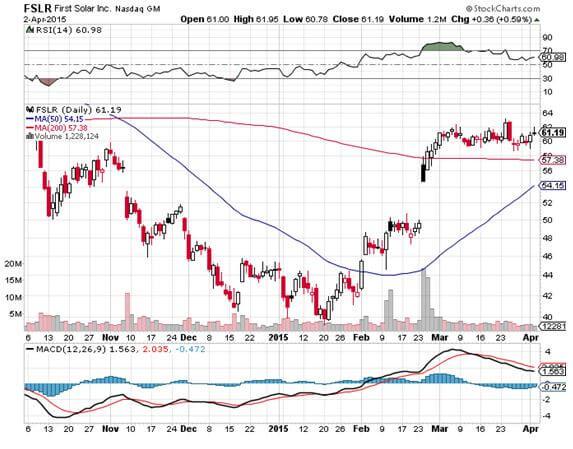
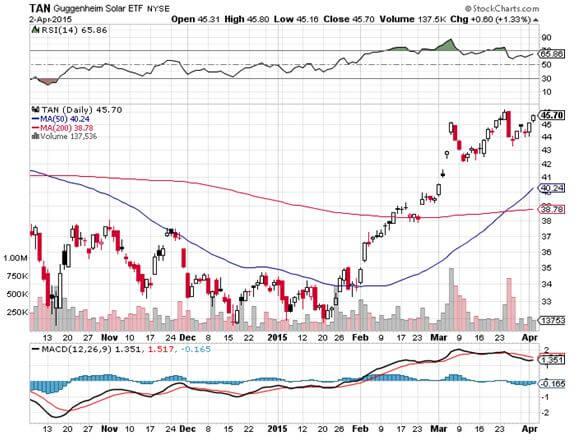
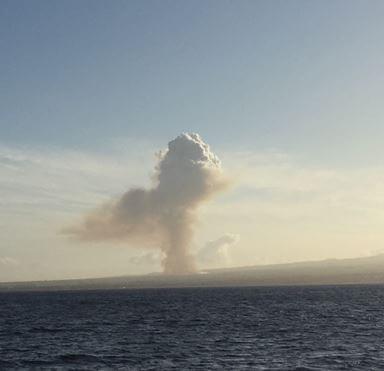



Busy Thinking Great Thoughts